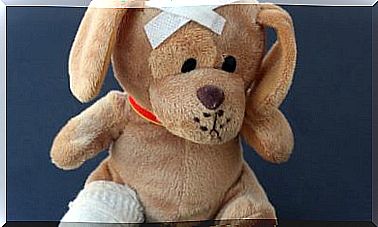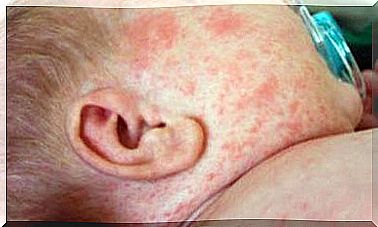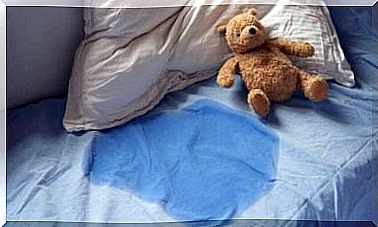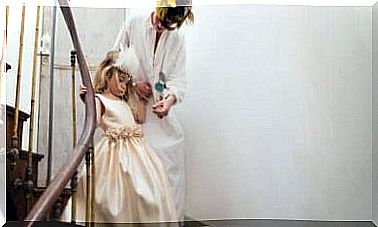Suffocation: How To Act To Help Your Baby?

There are two key points that can help you manage a choking case: stay calm and act fast. Take a first aid course: knowing the technique and putting it into practice can help you save your child’s life.
According to the Red Cross, choking occurs when a piece of food or a foreign body obstructs the throat or airways.
Choking prevents oxygen from reaching the lungs and brain, and lack of oxygen to the brain for more than 4 minutes can result in brain damage and death.
Signs of suffocation
The Red Cross also stresses the importance of recognizing a case of choking and knowing how to act, whether at home, in a restaurant or other public place.
Keep in mind that many times, when something goes wrong, a baby cannot cry or make any sound. It is possible for the child to grab his throat. You will have a mild cough and difficulty breathing or make a noise as you breathe.
Another sign is that the skin, lips and nails turn blue or dark in color. In these cases, you must give immediate assistance to clear the airways so that the child can breathe again.
It is important to take a first aid course. All caregivers should learn cardiopulmonary resuscitation for children and the abdominal thrusts technique. Both could be extremely useful.

What to do in the face of a case of choking
Contrary to popular belief, it is counterproductive to put your finger in the baby’s mouth and try to extract the object. Your finger may in fact push it deeper.
Techniques for children under 1 year
Sit down. Place the baby on his stomach on your forearm, supporting the baby’s face and neck with your hand. If you need it, place the arm supporting the baby on the thigh.
- Make sure that the child has his head slightly lower than the rest of his body, in order to facilitate the expulsion of the object from the throat.
- Use the part of the palm closest to the wrist to exert 5 quick thrusts between the baby’s shoulder blades.
- If the object continues to be stuck, place the baby on his stomach and apply pressure to the chest by placing the middle and ring fingers on the baby’s breastbone, in the center of the imaginary line between the nipples.
- The depth of the thrusts should be between half an inch and one inch. Practice 5 thrusts in a row.
- Check the baby’s mouth to see if the object has come out of the throat.
- If he has not, repeat steps 3 and 4 until the airways are cleared and the baby is breathing normally.
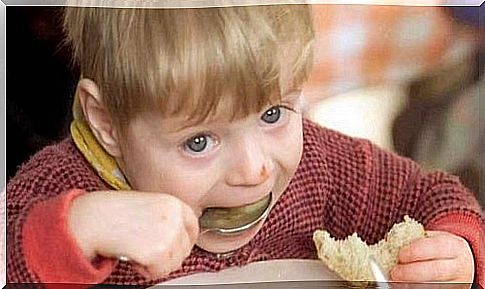
Techniques for children over one year old
- Stand behind the child. Kneel if necessary.
- Place one arm diagonally to the baby’s chest and tilt the baby forward.
- Use the part of the palm closest to the wrist to exert 5 quick thrusts between the baby’s shoulder blades.
- If the object continues to get stuck, practice 5 abdominal thrusts:
- Put your arms around the baby’s hips.
- Form a fist with your hand. Place the thumb-side fist directly above the navel.
- Grab the fist with the other hand.
- Apply short, quick presses by pushing inward and upward.
- Do not lift the child off the ground while doing the abdominal thrusts.
- Continue alternating 5 back blows and 5 abdominal thrusts until the jammed object is released.
- If the child is able to cough, encourage him to cough.
- If he can no longer cough, and continues to be conscious, hit him on the back.
If the baby stops breathing
- Place the child on a solid, level surface, such as a table or the floor.
- If you are with someone, ask the other person to call 911 immediately while you apply CPR to the baby.
- Concentrate on heart massage.
- Alternate with mouth-to-mouth breathing if you are able to do it.
If you are alone, do two minutes of CPR and call 911 afterwards. In the meantime, continue with the CPR.

How can choking be avoided?
The International Red Cross recommends taking the following precautions to prevent choking of children or babies:
- Keep marbles, beads, thumbtacks, latex balloons and other small objects and toys out of the reach of children, especially children under three.
- Avoid children running, playing or walking with food or toys in their mouths.
- Children under the age of 4 should not ingest foods that can easily get stuck in the throat, such as frankfurters and sausages, nuts, pieces of meat or cheese, grapes, hard or sticky candies, popcorn, peanut butter or raw carrots.
- Beware of small children during meals.
- Prevent older siblings from feeding little ones or letting them play dangerous games.
- Don’t let them play by pulling nuts in the air and catching them on the fly with their mouths.
- Don’t force them to eat by forcing food into their mouth.





